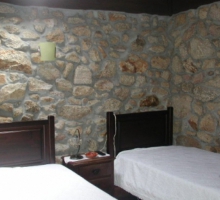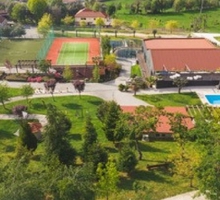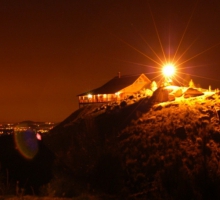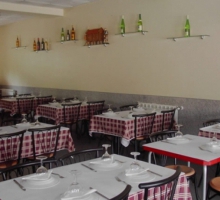According to a myth, the Serra da Cabreira (Cabreira Mountain) owes its name to a beautiful young girl who was known as a herd keeper: " (...) Thus, the people wished to forever preserve, in all fairness, the unhappy love affair of the young shepherdess girl. Therefore, naming the mountain where she lived her great passion, after “Serra da Cabreira” and since she wanted to be a bird and fly, named the river in Vila do Conde, the “Rio (River) Ave ... “. Whether by foot, by mountain bicycle or car, the Serra da Cabreira is an obligatory passage for those who visit Vieira do Minho, and for those who want to enjoy a lush mountain landscape.
The Serra da Cabreira extends throughout the territories of Vieira do Minho and Cabeceiras de Basto. Its Peak, the Talefe, with 1262 metres altitude, offers the visitor a truly stunning and sublime landscape over the mountain villages and reservoirs. This Mountain still preserves an important nucleus of archaeological, prehistoric, megalithic tombs as shelters, tumuli, rock engravings that confirm the antiquity of the human occupation in this county. Here we also find the Fojos do Lobo (Wolf Caverns) of wolf hunting traps through which wolves and game hunting were captured; the huts that housed the shepherds when these were keeping their cattle. There are 4 “Fojos” known as: Fojo of Alagôa, Fojo Grande, Fojo do Meio and Fojo Novo.
This monumental set consists of walls of about of 2,5 m in height. Its area covers the parishes of Anjos, Ruivães and Rossas, extending as a whole by 2.5 km. The cabins are very modest buildings, practically all of circular plan, with stone walls, slabs and lumps of soil. These were built towards the end of the 16th century and beginning of the 18th century.
Location: Vieira do Minho










